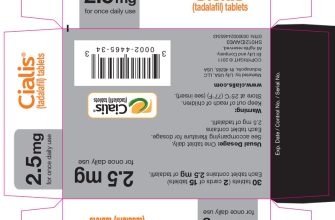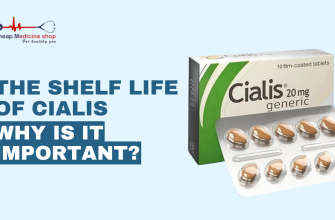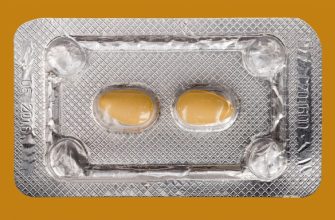Sildenafil, the active ingredient in Viagra, offers a valuable treatment option for pulmonary arterial hypertension (PAH). It directly targets the pulmonary vasculature, improving blood flow and reducing pressure.
Clinical trials have demonstrated sildenafil’s efficacy in improving exercise capacity and overall quality of life for PAH patients. Specifically, studies show significant improvements in 6-minute walk distances and reduced symptoms like shortness of breath.
However, remember that sildenafil isn’t a cure-all. Individual responses vary, and a doctor will carefully assess suitability, considering other medications and potential side effects. Regular monitoring of blood pressure and liver function is typically recommended during treatment.
Dosage is determined by your physician based on your specific condition and response to therapy. Common side effects include headaches, flushing, and visual disturbances, which generally are mild and transient. Always discuss any concerns with your healthcare provider.
- Viagra and Pulmonary Arterial Hypertension: A Patient’s Guide
- Understanding Pulmonary Arterial Hypertension (PAH)
- Sildenafil (Viagra) and its Mechanism of Action in PAH
- Increased cGMP and its Effects
- Dosage and Considerations
- Alternative Treatment Approaches
- Viagra’s Efficacy and Limitations in PAH Treatment
- Response to Treatment
- Side Effects and Limitations
- Current Treatment Landscape: Viagra’s Place Among Other PAH Therapies
Viagra and Pulmonary Arterial Hypertension: A Patient’s Guide
Sildenafil, the active ingredient in Viagra, is also used to treat pulmonary arterial hypertension (PAH). It works by relaxing blood vessels in the lungs, improving blood flow and reducing strain on the heart.
Understanding Your Treatment: Your doctor will determine the appropriate dosage based on your specific condition and response. Regular check-ups are crucial to monitor your progress and adjust the medication as needed. Report any side effects immediately.
Common Side Effects: Headache, flushing, and nasal congestion are relatively common. More serious side effects, though rare, include vision changes and sudden hearing loss. Seek medical attention if you experience these.
Lifestyle Adjustments: Maintaining a healthy lifestyle is important. This includes regular exercise (as advised by your doctor), a balanced diet, and avoiding smoking. These changes, combined with medication, can significantly improve your quality of life.
Medication Interactions: Inform your doctor about all medications you take, including over-the-counter drugs and supplements, as some can interact with sildenafil. This includes nitrates, which are commonly used to treat chest pain. Combining them can be dangerous.
Questions & Concerns: Don’t hesitate to discuss any questions or concerns with your doctor or a PAH specialist. They can provide personalized advice and support throughout your treatment.
Long-Term Management: PAH management is a long-term commitment. Consistent medication, lifestyle adjustments, and regular check-ups are key to managing your condition and improving your outlook.
Understanding Pulmonary Arterial Hypertension (PAH)
Pulmonary arterial hypertension (PAH) is a serious condition affecting the arteries in your lungs. It causes high blood pressure in these vessels, making it harder for your heart to pump blood.
PAH narrows the arteries, increasing resistance to blood flow. This forces your heart to work harder, potentially leading to heart failure.
- Symptoms: Shortness of breath, especially during exertion, is a common symptom. You may also experience chest pain, dizziness, and fatigue. Some individuals experience fainting.
- Diagnosis: Diagnosis involves a thorough physical examination, echocardiogram, and right heart catheterization (to measure blood pressure in your heart and lungs).
- Risk Factors: Several factors can increase your risk, including family history of PAH, connective tissue disorders, and certain heart conditions. Exposure to certain toxins can also contribute.
PAH treatment aims to improve blood flow and reduce symptoms. It often involves a combination of medications.
- Medications: These medications work in several ways, including relaxing blood vessels and improving blood flow. Your doctor will select the most appropriate medications based on your specific needs.
- Lifestyle Changes: Adopting a healthy lifestyle is crucial. This includes regular exercise (as tolerated), a balanced diet, and quitting smoking.
- Oxygen Therapy: Supplemental oxygen may be necessary to alleviate shortness of breath.
Early diagnosis and treatment are key to managing PAH effectively. Regular check-ups with your doctor are recommended to monitor your condition and adjust treatment as needed. Discuss any concerns you have promptly with your healthcare provider.
Sildenafil (Viagra) and its Mechanism of Action in PAH
Sildenafil treats pulmonary arterial hypertension (PAH) by inhibiting phosphodiesterase-5 (PDE5). PDE5 breaks down cyclic guanosine monophosphate (cGMP), a crucial molecule that relaxes blood vessels. By blocking PDE5, sildenafil increases cGMP levels.
Increased cGMP and its Effects
Elevated cGMP leads to smooth muscle relaxation in the pulmonary arteries. This dilation reduces pulmonary vascular resistance, improving blood flow to the lungs and easing the strain on the heart. Consequently, patients experience improved exercise capacity and reduced symptoms.
Dosage and Considerations
Sildenafil is typically administered orally, with dosage adjusted based on individual patient response and tolerance. Regular monitoring of blood pressure and potential side effects is necessary. Patients should consult their physician for personalized guidance on dosage and management.
Alternative Treatment Approaches
While sildenafil offers significant benefits, other PAH treatments exist. These include endothelin receptor antagonists, prostanoids, and guanylate cyclase stimulators. Your doctor will consider your specific condition and medical history when determining the best treatment plan.
Viagra’s Efficacy and Limitations in PAH Treatment
Sildenafil, the active ingredient in Viagra, demonstrates efficacy in treating pulmonary arterial hypertension (PAH) by relaxing blood vessels in the lungs, improving blood flow, and reducing pulmonary vascular resistance. Studies show improved exercise capacity and quality of life for many patients. However, its benefits are not universal.
Response to Treatment
While sildenafil offers benefits for some, a significant portion of PAH patients don’t experience substantial improvement. The drug’s effectiveness varies widely, and factors like disease severity and individual patient response play a crucial role. This underscores the need for individualized treatment plans and close monitoring.
Side Effects and Limitations
Common side effects include headaches, flushing, and visual disturbances. More serious side effects, though less frequent, may include hypotension and cardiac arrhythmias. Sildenafil is not a cure for PAH, and its use is often limited to early stages or in combination with other PAH therapies. It is also unsuitable for patients with certain pre-existing conditions, including uncontrolled hypotension and severe retinal disease. Careful consideration of these factors is needed before prescribing.
Current Treatment Landscape: Viagra’s Place Among Other PAH Therapies
Sildenafil (Viagra) remains a valuable, albeit often second-line, treatment option for pulmonary arterial hypertension (PAH). It targets the underlying pathophysiology by inhibiting phosphodiesterase-5, leading to increased nitric oxide and improved vascular tone.
First-line therapies typically involve endothelin receptor antagonists (ERAs) like bosentan or ambrisentan, or prostanoids such as epoprostenol, treprostinil, or iloprost. These agents directly address vascular constriction and inflammation, often providing a more significant initial impact on hemodynamics than sildenafil.
Guanylate cyclase stimulators, such as riociguat, represent another class of PAH medications. They work through a different mechanism than sildenafil, offering potential benefits for patients who don’t respond adequately to phosphodiesterase-5 inhibitors.
Physicians often use sildenafil in combination with other PAH therapies. This strategy may enhance treatment efficacy and mitigate individual drug limitations. However, careful monitoring of potential drug interactions is paramount.
The selection of appropriate therapy depends on individual patient factors, including disease severity, other medical conditions, and response to treatment. Regular hemodynamic monitoring and clinical assessments guide treatment adjustments.
While sildenafil offers a relatively well-tolerated and established treatment option for PAH, its efficacy may be less pronounced compared to newer agents. Careful consideration of risk-benefit profiles is therefore necessary for optimal patient management.







